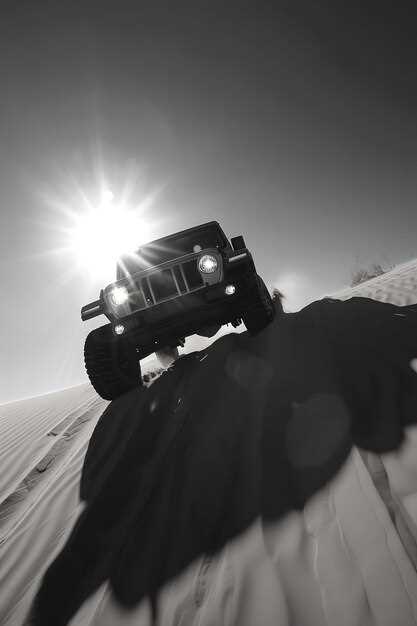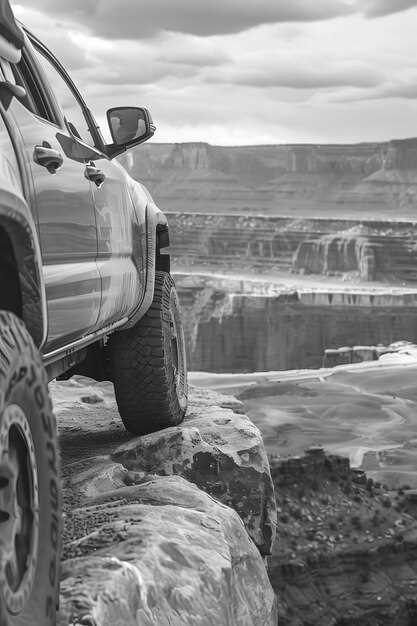
When it comes to off-road truck adventures, visibility is paramount. The thrill of traversing rugged terrains and exploring remote trails is undeniable, but it comes with its own set of challenges, particularly in low-light conditions. To enhance safety and visibility, investing in a high-quality LED light bar is essential for any off-road enthusiast. LED light bars not only provide powerful illumination but also exhibit durability and energy efficiency, making them ideal for tough conditions.
In this article, we will delve into the top LED light bars currently on the market, highlighting their features, benefits, and unique specifications. Whether you are navigating through dense forests, rocky paths, or sandy dunes, the right light bar can significantly improve your driving experience. We will explore various options to suit different vehicle types and adventure needs, ensuring that you find the perfect match for your setup.
From compact models designed for tight spaces to larger setups that offer broad lighting coverage, each option provides a distinct advantage. Moreover, we’ll discuss the installation process and essential factors to consider when choosing the right light bar for your truck. Read on to discover how these powerful lighting solutions can enhance your off-road escapades while ensuring you stay safe and confident on any adventure.
Choosing the Right Brightness and Beam Pattern for Night Drives

When selecting LED light bars for off-road truck adventures, understanding brightness and beam pattern is crucial for optimal performance during night drives. Brightness is typically measured in lumens; the higher the lumen count, the more light output you’ll have. For off-road use, a minimum of 3,000 lumens is often recommended to ensure adequate visibility in rugged terrains. However, many drivers opt for models that exceed 10,000 lumens for exceptional illumination.
Beam pattern describes how the light is distributed across the area. There are generally two types of beam patterns to consider: spot beams and flood beams. Spot beams focus light into a tight, concentrated pattern, making them ideal for long-distance visibility, such as spotting obstacles or finding paths in the dark. Flood beams, on the other hand, disperse light across a wider area, which is advantageous for close-range visibility and illuminating broader surroundings.
Many modern LED light bars combine both beam patterns in a hybrid format. This versatility allows off-road enthusiasts to manage various driving conditions effectively. For example, using a combination of spot and flood beams creates a well-rounded lighting solution that enhances both depth and width of visibility, providing comprehensive coverage when navigating through challenging environments.
In summary, when choosing an LED light bar for night drives, consider both brightness and beam pattern carefully. Ensure the lumen output meets your visibility needs, and select a beam pattern that matches your driving style and terrain. Understanding these elements will ensure safer and more enjoyable off-road experiences after dark.
Installation Tips for Optimal Performance on Your Off-Road Truck
When installing LED light bars on your off-road truck, ensuring proper positioning and wiring can significantly enhance performance. Start by selecting a mounting location that maximizes visibility while minimizing disruptions to the truck’s aerodynamics. The most common locations are on the front bumper, roof, or above the windshield.
Before installation, gather all necessary tools and components, including mounting brackets, wiring harnesses, and switches. Ensure that the LED light bar’s specifications match your truck’s electrical system to avoid potential issues. A professional-grade wiring harness is recommended to facilitate a secure and reliable connection.
When mounting the light bar, ensure it is firmly secured to prevent vibrations from compromising its alignment during off-road excursions. Utilize rubber grommets or vibration dampeners to reduce wear on both the light bar and the mounting hardware.
For optimal illumination, angle the light bar appropriately. A slight upward tilt can often provide better visibility of obstacles and terrain ahead. Some users find that adjusting the angle during night drives allows for real-time adjustments based on the specific terrain conditions.
Properly routing wiring is essential to prevent damage and interference with other vehicle components. Use zip ties to secure wiring along the chassis, avoiding areas that experience high heat or friction. Consider weatherproof connectors to protect against moisture and dirt, ensuring long-lasting performance.
Lastly, calibrate your light bar’s settings and test it in various conditions. This includes low-light environments, uneven terrains, and during the day to ascertain optimal performance. Regular inspections and maintenance of the light bar also ensure longevity and effectiveness over time.
Comparing Durability and Weather Resistance Features in LED Light Bars
When selecting LED light bars for off-road truck adventures, assessing durability and weather resistance features is crucial. These attributes ensure that the light bars can withstand harsh environments while providing reliable illumination. Here, we will examine the key factors regarding durability and weather resistance.
1. Construction Materials
The materials used in LED light bars significantly impact their overall durability:
- Aluminum Housing: Most high-quality light bars feature an aluminum housing, which is lightweight yet highly durable. Aluminum resists corrosion and is effective in dissipating heat.
- Polycarbonate Lens: A polycarbonate lens is preferred for its impact resistance compared to glass. This prevents shattering from debris encountered during off-road use.
2. Ingress Protection Rating (IP Rating)

The Ingress Protection (IP) rating indicates how well the light bar can resist dust and water:
- IP67: Light bars with an IP67 rating are fully protected against dust and can withstand temporary immersion in water up to 1 meter for 30 minutes.
- IP68: A light bar rated IP68 offers even better protection, typically rated for immersion beyond 1 meter, making it ideal for extreme conditions.
3. Shock Resistance
Off-road driving can expose light bars to significant vibrations and impacts:
- Built-in Reinforcement: Some models feature reinforced brackets and mounts, enhancing shock resistance and preventing damage during rugged maneuvers.
- Rigorous Testing: Choose light bars that undergo rigorous testing, including vibration tests and drop tests, ensuring they can endure harsh environments.
4. Temperature Tolerance
LED light bars must perform across a range of temperatures. Consider the following:
- Operating Temperature Range: Look for light bars with a specified operating temperature range, typically from -40°F to +140°F (-40°C to +60°C).
- Heat Dissipation Features: Effective heat dissipation mechanisms, like cooling fins, help maintain optimal performance and longevity.
5. Warranty and Reviews
Lastly, consider the manufacturer’s warranty and user reviews:
- Warranty: A longer warranty typically indicates confidence in the durability and weather resistance of the product.
- User Feedback: Check reviews and testimonials from other off-road enthusiasts to gauge how well the light bars withstand various conditions.
Evaluating these features will help you choose LED light bars that meet the demands of your off-road adventures, ensuring reliability and performance in the toughest conditions.
